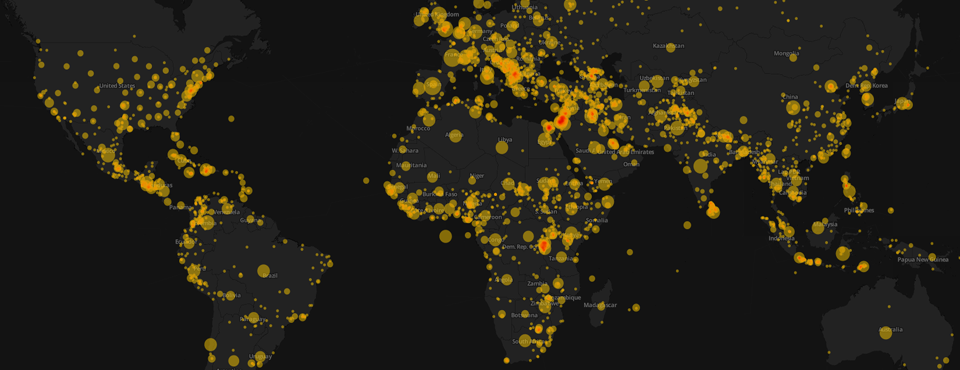So much of the world’s public knowledge of human rights issues across the world are locked in textual format, scattered across the hundreds of thousands of reports, calls to action, alerts, field interviews, and other material published by a myriad of organizations throughout the globe. Could GDELT help codify and index all of this material, making it possible to look across it for macro-level global patterns and evolving shifts, as well as to accelerate the identification of leadership and military and police units documented as being particularly egregious offenders?
The GDELT Human Rights Global Knowledge Graph (HR-GKG) is the first in a series of special collections expanding GDELT beyond its traditional realm of mainstream news media. This particular special collection is designed to codify a cross-section of human rights documentation covering the last few decades, offering a rich and highly specialized dataset to explore global human rights issues through the quantitative lens of the GDELT Global Knowledge Graph system, as well as the ability to further contextualize those findings through the broader news-based GDELT ecosystem.
In total 110,552 documents were processed to create this specialized Global Knowledge Graph: 65,731 from Amnesty International back to 1960, 5,255 from FIDH, 24,791 from Human Rights Watch, 709 from the International Criminal Court, 1,333 from the International Crisis Group, 5,976 from the United Nations Office of the High Commissioner for Human Rights, and 6,757 from the United States Department of State (comprising its Country Reports on Terrorism, Human Rights Reports, International Religious Freedom Reports, and Trafficking in Persons Reports series) . Taken together, the reports, news releases, and alerts of these seven organizations offer a substantial cross-national view of human rights issues throughout the world.
Already, we are exploring with the US Department of State how this collection can be used to assist in Leahy Law compliance, using GDELT to automatically identify trends and compile lists of leaders and units implicated in human rights issues for further human analysis, greatly accelerating the vetting process.
As just one example of how this new knowledge graph can be used, the image below shows all locations mentioned ten or more times across all digital and digitized English-language Reports, Press Materials, Urgent Actions, Event, and “Other” documents for all countries and issues published by Amnesty International January 1960 to present. (The gridded appearance in the US is a result of allowing country and Administrative Division level matches to count, given the aggregate geographic resolutions used in many reports). While far from a perfect view of Amnesty’s coverage over the last half century (especially the scarcity of digitized reports from the earlier decades), such an approach could be used in future to transform how we interact with the vast archives of textual reports that contain so much of the knowledge of greatest interest to human rights organizations throughout the world.
- GDELT Human Rights Global Knowledge Graph Codebook.
- GDELT Global Knowledge Graph (GKG) Version 2.0 Codebook.
- HR-GKG.AMNESTY.gkgv2.csv.zip
- HR-GKG.CRISISGROUP.gkgv2.csv.zip
- HR-GKG.FIDH.gkgv2.csv.zip
- HR-GKG.HRW.gkgv2.csv.zip
- HR-GKG.ICC.gkgv2.csv.zip
- HR-GKG.OHCHR.gkgv2.csv.zip
- HR-GKG.USSTATE.gkgv2.csv.zip
